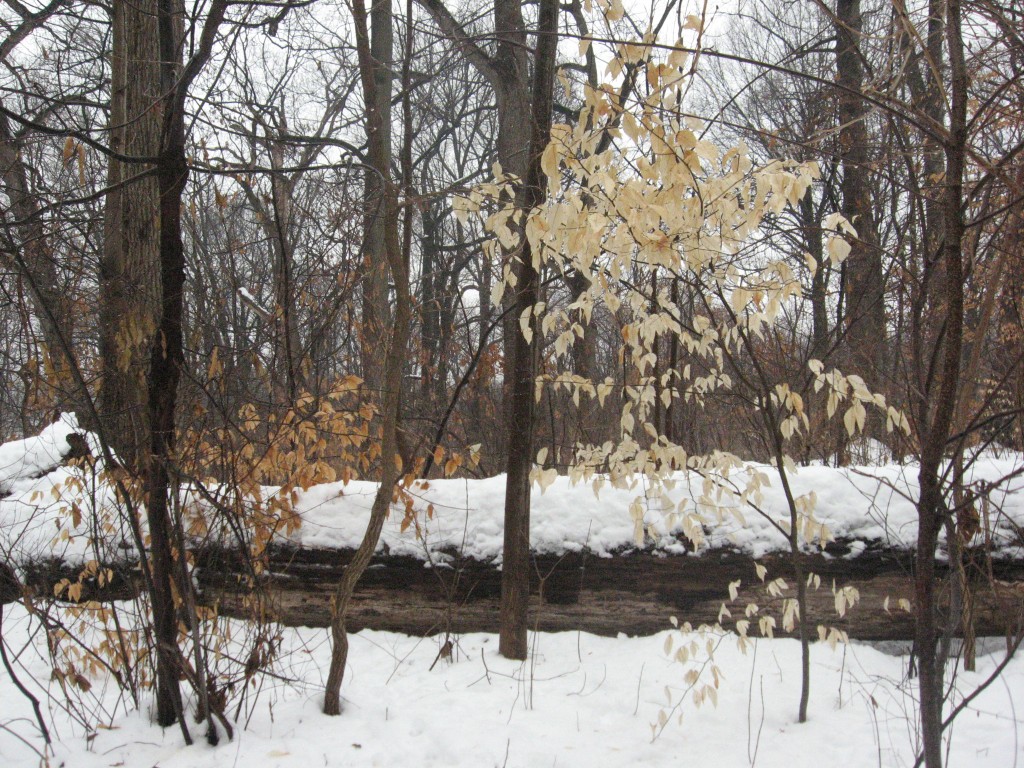
Fagus grandifolia. Â Walking Keeba on Saturday morning, we noticed that these two young Beech trees had different colors in the leaves.
This Monday morning, while walking Keeba, the Beech trees were rattling in the breeze. Â The leaves of the Beeches stay on through the winter, and they turn yellow and brownish, and they get brittle. Â When the wind blows the leaves rattle. On a quiet winter’s day, while working in Morris Park removing invasives, this rattling sound is the only sound in the forest.
The two beech trees in the photo above were covered with grape vines this fall. The one to the right is still leaning a bit from the vestigial impact of the vines. The Vines have been removed and the trees now have a chance to grow.
The fallen tree behind the Beeches is an oak tree, and its status is considered a log. A log is a fallen tree.
The very dark and thin tree to the left foreground is an American Chestnut (Castenea dentata).  This tree has been reduced to the status of a forest shrub or small tree, from originally the dominant forest tree in the canopy. The American Chestnut blight (Cryphonectria parasitica) introduced from Asian chestnut trees is responsible for this condition.  The blight does not effect the tree below the ground, so the root systems are able to grow a new tree after the old one dies.  The thin tree to the left foreground may very well be hundreds of years old.  This specimen has been leafing out and growing taller year after year. However the blight, in the form of a fungus, tears apart the bark, and the tree may not live another year. (however the actual specimen will remain alive in its root system)  The roots have already sent out new shoots, which will grow into a new tree.
In Morris Park, there are a significant number of Chestnut trees in comparison to the rest of the city and county of Philadelphia. Â This year, one of them even flowered and produced seeds, for the first time in at least five years (Since we first monitored them).
All of the trees we discussed today are in the same family, Fagaceae. A family trait they all share is that they all retain some of their leaves throughout the winter.


